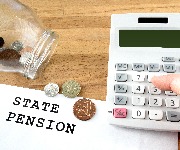Overseas pension transfers: regulation, taxes and scam risks explained

You might want to retire abroad, but what happens to your pension? Financial planner Jeannie Boyle of EQ Investors answers the big questions.
Sections
Do I even need to transfer my pension?
If you have a pension account in one country but are relocating for retirement, there are a few ways to handle your pension:
You can leave the pension in the origin country and have regular payments transferred to an account in the country where you have retired.
Alternatively, you can sometimes move the whole pension to your retirement country and either take a lump sum payment or invest it in a new pension scheme there.
Or, if you have more than one source of retirement income, you may wish to transfer one as a lump sum while leaving the other as monthly payments.
We've put together a full guide to retiring abroad - click here to read more
What are QROPS?
If you opt to move your entire pension overseas, you will need to use a type of pension called a QROPS - a Qualifying Recognised Overseas Pension Scheme recognised by HMRC.
There are complicated rules which determine if a scheme qualifies. The main three are:
- Tax recognition: the scheme must be recognised for tax purposes in the jurisdiction where it’s established.
- Regulated pension scheme conditions: If there is a pensions regulatory body in the jurisdiction where the scheme is set up, the pension scheme must be regulated by that body.
- Recognised overseas pension scheme conditions: The same tax rules on benefits have to be applicable to tax residents and non-residents.
HMRC has a list of QROPS and updates the list on the first and the fifteenth of each month. Being on the list doesn’t guarantee that the scheme or jurisdiction will be right for you. The most suitable jurisdiction isn’t necessarily the country that you plan to retire to.
QROPS are specialist products and tend to have relatively high charges. However, once your account is set up you can transfer your UK pension fund into it just like you would in the UK.
When you could be taxed
Since March 2017, certain transfers from a UK pension scheme to a QROPS became liable to a 25% overseas tax charge on the value transferred.
If you are living in the country in which the QROPS is based, you will generally be exempt. This also applies, if you live in a country in the European Economic Area (EEA (an EU Member State, Norway, Iceland or Liechtenstein)) and the QROPs is within the EEA.
You’ll need to think about your circumstances and the overseas scheme to which you are transferring so that you know if your transfer will lead to the overseas transfer charge.
If the transfer is not liable to the overseas transfer charge at the point of transfer, UK tax charges will apply if, within five tax years, an individual becomes resident in another country so that the exemptions would not have applied to the transfer.
Read more: 9 ways to make your retirement savings last longer
Cold calling scams
Be aware and cautious of companies cold-calling you especially if they are not regulated: there is no recourse if things go wrong.
Never commit to signing anything under pressure and double check the adviser’s credentials and experience before you engage in follow-up conversations.
If it sounds too good to be true, it probably is.
The Government's proposed ban on pension cold-calling continues to be delayed; however, there are a number of simple steps to stop nuisance phone calls of all varieties.
Currency risk
If you’re transferring your pension from the UK to your new country of residence, you should pay close attention to the exchange rates – dramatic fluctuations one way or the other could impact the amount you receive. Exchange rates can change significantly, and sometimes in a short space of time.
It’s also worth remembering that you might want to return to the UK in the future and find you need to convert assets back into sterling.
Don't get ripped off by your bank - get a better exchange rate on loveMONEY's comparison site
Who’s managing your pension investments?
On a transfer to a QROPS, you take responsibility for your investments. You also need to check on the impact of local rules and whether the scheme offers access to a wide choice of investments.
Be ultra-careful about taking investment advice from those who have financial incentive to sell you the idea of a transfer in the first place.
A proposal to put the money in a single investment promising a 10% annual return should set the alarm bells ringing. In most circumstances, financial advisers will suggest diversifying your assets.
How to find reliable pension advice (and what to watch out for)
Can I still receive a UK state pension?
It’s possible to live in another country and receive a UK State Pension, but you should be aware that you will only be eligible to receive pension increases each year if you live in the European Economic Area, Switzerland or a country that has an agreement with the UK.
Otherwise, you won’t get annual increases, unless, of course, you move back to the UK.
The Government has indicated that British pensioners who live in the EU will continue to see their state pension payments increased each year after Brexit.
Find out more about the UK State Pension and how much it pays here.
Seek financial advice
Don't commit to transferring your pension abroad without careful consideration.
Consider taking advice or seeking a second opinion from a chartered financial planner, certified by the Chartered Insurance Institute that specialises in this type of advice.
There are more options available to you than ever before, and a chartered planner can help you determine the best options based on your individual circumstances.
If you want to learn more about retirement planning, read our comprehensive guide to pensions.
Jeannie Boyle is Director & Chartered Financial Planner at EQ Investors. The views expressed in this article do not necessarily represent those of loveMONEY.
Most Recent
Comments
Be the first to comment
Do you want to comment on this article? You need to be signed in for this feature








